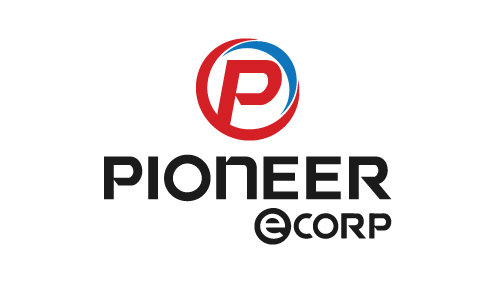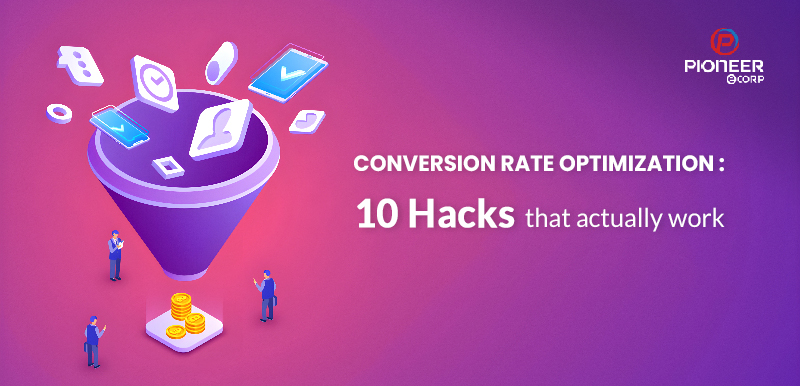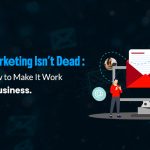Getting traffic to your website is only half the battle. The real win? Converting that traffic into leads, subscribers, or sales. That’s where Conversion Rate Optimization (CRO) comes in.
CRO is the process of making intentional changes to your website, landing pages, or funnels to increase the percentage of visitors who take a desired action—whether it’s filling out a form, making a purchase, or subscribing to your newsletter.
In this post, we’ll walk you through 10 CRO hacks that actually work—based on real-world data, psychology, and user experience best practices.
1. Use Clear & Action-Oriented CTAs
Your call-to-action (CTA) is the tipping point between bounce and conversion. Vague or generic CTAs like “Submit” or “Click Here” won’t cut it in 2025.
What works:
- Use action verbs like “Get,” “Start,” “Download,” or “Try”
- Add urgency: “Get Started Today,” “Grab Your Spot Now”
- Be specific: “Download the Free Guide” vs. “Learn More”
Pro tip: Test CTA placement, size, and color using A/B testing tools like Google Optimize or VWO.
2. Simplify Your Forms
Long, complicated forms are a conversion killer. The more fields users have to fill out, the more likely they’ll abandon the process.
What works:
- Reduce the number of form fields to the essentials
- Use autofill and smart dropdowns
- Break longer forms into multi-step progress (step-by-step)
- Show clear error messages and guidance
3. Leverage Social Proof
People trust people. When visitors see others benefiting from your product or service, they’re more likely to convert.
Use these forms of social proof:
- Customer testimonials
- Star ratings & product reviews
- Case studies and success stories
- Real-time notifications (e.g., “John from Texas just signed up”)
Bonus: Show logos of well-known clients to boost credibility.
4. Improve Your Page Load Speed
Speed = conversions. According to Google, a 1-second delay in page load can reduce conversions by up to 20%.
How to improve speed:
- Compress images and videos
- Use lazy loading
- Minify CSS, HTML, and JavaScript
- Choose a fast hosting provider
- Use a CDN (Content Delivery Network)
Use tools like GTmetrix or Google PageSpeed Insights to diagnose issues.
5. Use High-Converting Landing Pages
Sending paid traffic to a homepage is a waste. Instead, create dedicated, focused landing pages that match the user intent.
Elements of a high-converting landing page:
- Compelling headline
- One focused CTA
- Benefit-driven content
- Trust elements (badges, reviews, guarantees)
- Mobile-first design
Use tools like Unbounce or Instapage to build and test landing pages quickly.
6. Add Exit-Intent Popups
Exit-intent popups track mouse movement and appear just before a user leaves your site. Done right, they can recover 10–15% of abandoning visitors.
Effective use cases:
- Offer a limited-time discount
- Invite users to download a free guide
- Capture emails before they bounce
Note: Keep them non-intrusive and relevant.
7. Create a Strong Value Proposition
What’s in it for them? If your visitors can’t instantly understand the benefit of your offer, they won’t take action.
Your value proposition should answer:
- Who is this for?
- What does it solve?
- Why is it better than alternatives?
Place your value prop above the fold on key pages like the homepage and landing pages.
8. Optimize for Mobile Conversions
Over 60% of users now access websites from mobile devices. A bad mobile experience = lost conversions.
Mobile CRO tips:
- Use large, tap-friendly buttons
- Avoid tiny fonts or overlapping elements
- Simplify menus and navigation
- Speed up mobile page load time
Test mobile UX separately from desktop using tools like Hotjar’s mobile heatmaps.
9. Use A/B Testing Consistently
What works for one business may not work for yours. Regular split testing helps you find the best-performing version of your pages, CTAs, and offers.
Test things like:
- Headlines
- CTA button text/color
- Images or videos
- Page layout and copy length
Pro tip: Only test one change at a time to isolate what’s working.
10. Create Scarcity & Urgency
Psychological triggers like FOMO (Fear of Missing Out) can significantly boost conversions.
Examples:
- “Only 3 spots left”
- “Sale ends in 12 hours”
- Countdown timers on product or checkout pages
Use these tactics honestly—fake scarcity can damage your credibility.
Final Thoughts: CRO is an Ongoing Process
Conversion Rate Optimization is not a one-time fix. It’s a continuous cycle of testing, measuring, and improving. Start with the low-hanging fruits from the list above, and build a long-term CRO strategy focused on real user behavior and data—not guesses.
Even a small uplift in your conversion rate (say, from 2% to 3%) can translate into massive revenue growth over time.






Leave A Reply